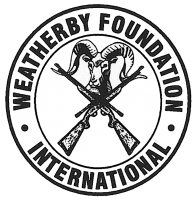WHAT IT TAKES TO WIN THE WEATHERBY HUNTING AND CONSERVATION AWARD
If it is accepted that the WEATHERBY HUNTING AND CONSERVATION AWARD is the world’s most prestigious and desired hunting award then it follows that the accomplishments required to win it are among the most difficult.
The Selection Committee is a permanent committee of WEATHERBY FOUNDATION INTERNATIONAL. It is comprised of past winners of the WEATHERBY AWARD and its members’ hunting experiences equal hundreds of years in the field and thousands of hunts. It is this vast amount of experience in the field and the personal network of guides, outfitters, and booking agents that make the Selection Committee qualified to choose the Award winner.
One of the Selection Committee members defines an award winner as “that hunter who has ethically taken the most varied, difficult, and largest number of species in the world, and who has not already won the award”.
There are three categories that comprise the awards submission document, the Ballot.
- Hunting Accomplishments
- Conservation and Education
- Character and Sportsmanship
Before describing these categories, it is important to state that the Award is open to all ethical hunters worldwide. There have been numerous winners from countries other than the USA. Additionally, there have been two ladies who have won this prestigious award.
The submission process is by invitation only. If someone, who in the opinion of the Selection Committee, is not eligible to win or compete for the Award they will not receive a Ballot.
No one may win the first year that they are a Nominee. The reason for this is to give the Selection Committee a year to learn about the Nominee’s hunting achievements and conduct in the field from guides and fellow hunters and to confirm the Nominee’s high ethical standards.
Before a ballot is sent to a prospective applicant, the applicant is required to complete a Disclaimer, Waiver, and Indemnity. It is in these documents that the prospective applicant confirms their ethical behavior and compliance with the hunting regulations around the world and they certify to the accuracy of all information that is submitted. This procedure is relatively new and has evolved to protect the Foundation from the efforts of people who want to apply for the Award but are, in the Selection Committee’s opinion, not eligible because of their conduct as a hunter, their character, or their contributions to conservation or hunting.
Hunting Accomplishments
This category, representing the major share (65%) of the total judging value, relates directly to the hunter’s accomplishments in the field as represented by the trophies actually collected. Factors to be considered include (in no particular order); number and variety of species of game animals taken; quality of trophies (as evidenced by standard measuring practices and placement in generally recognized record books), number, geographical distribution (nominee’s trophies must be taken on all continents supporting big game species) and difficulty of hunts represented by trophies taken.
Conservation and Education
This category, representing (20%) of the total judging value, is intended to give consideration to each Nominee’s contributions to wildlife conservation and education demonstrating the positive role hunting plays in conserving the world’s wildlife.
Although every hunter who is under consideration for the WEATHERBY AWARD has already contributed greatly to international, national, and local wildlife conservation efforts through purchases of licenses and tags, trophy fees, taxes on equipment, etc., this category recognizes only direct contributions to specific conservation programs. Examples might include: contributions (financial or otherwise) toward specific conservation projects, such as wildlife habitat protection or restoration, working for the protection, propagation, and/or reintroduction of endangered game or non-game wildlife species; or participation in trapping/relocation programs for the improvement of genetic diversity within a specific wildlife population; as well as serving on boards or in various capacities within existing conservation organizations, and/or individual projects undertaken by the nominee. Obviously, the available possibilities are endless.
This category also recognizes the importance of educating and involving young people in the positive role of hunting, in wildlife conservation programs, and as a healthy outdoor recreation pursuit. Examples might include establishing, funding or assisting shooting/hunting education programs in schools, scouting groups, 4-H, etc.; working to establish special hunts or hunting areas for young hunters; or contributions of hunts to young people.
Character and Sportsmanship
This category, comprising 15% of the total award judging value, is concerned with the hunter’s character, integrity in the field, and lifelong commitment to hunting. Some examples of factors considered might include records of compliance (or non-compliance) with local, national and international laws, regulations and treaties regarding the taking of game animals; reputation and evidence of dedication to the principles of fair chase and ethical hunting; leadership in establishing/promoting anti-poaching, hunter ethics and other programs designed to enhance the image of ethical hunters; and record of assistance to organizations established to promote and protect the rights of ethical hunters. If a Nominee has a questionable hunting history the Selection Committee members may take a few points off in this category. The quality of the Nominees, and the narrow range of scores, means that much of a discount here effectively eliminates the Nominee from contention.
The Ballot consists of approximately 50 pages and takes days to complete. Most of the hunted species in the world are listed. In Asia, there are over 200 species listed. This list is reviewed each year as new countries open up to hunting. The number of hunts, countries hunted, trophy quality, and duplicate trophies of the same specie are all included in deciding a winner.
Each year there are six nominees. Each Selection Committee Member has their own method of judging, as different members often place different emphasis on the many factors contained in the Ballot.
No one can win without a significant number of sheep, goats, chamois, the big five, spiral horned antelope, pygmy antelope, and most of the North American species. Collecting the Marco Polo, Mountain Nyala, Polar Bear, Markhor and other very difficult species weigh heavily in the judging.
The judges establish a numerical score for each nominee’s criteria. The nominee with the highest point total from all judges is presented to the Foundation’s Board of Directors for their final approval.
The following was published in one of the Weatherby Foundation’s newsletters years ago and it stands true today:
“What’s It Take To Win The WEATHERBY AWARD: It is easy, climb a few million feet, walk a few thousand miles, spend years away from home, family and work, usually in a foreign land. Travel for days on icy, gravel mountain roads in old jeeps or SUV’s full of other people’s cigarette smoke. Endure hundreds of searches in airports, borders and military checkpoints. Get sick or hurt, lose luggage and suffer delays too numerous to mention. Sound like fun? It is. It is a passion and way of life for a few very fortunate people.”




